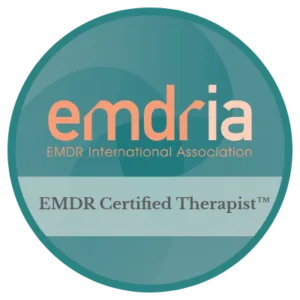Ketamine for PTSD has emerged as a promising treatment option, offering hope to patients struggling with trauma symptoms. Research indicates that ketamine’s unique mechanism of action may provide rapid relief from PTSD symptoms in patients, offering a new avenue for those who have not responded to traditional treatments. As clinical trials continue to explore the efficacy and safety of ketamine for PTSD, early results are encouraging, suggesting its potential to revolutionize PTSD treatment approaches.
With the growing interest in innovative therapies for mental health conditions like PTSD, the exploration of ketamine’s benefits in psychiatry underscores the importance of innovative solutions in addressing complex psychological disorders. Stay tuned as we delve deeper into the evolving landscape of ketamine therapy for PTSD.
Understanding PTSD
DSM Criteria for PTSD Symptoms
The Diagnostic and Statistical Manual of Mental Disorders (DSM-5) outlines specific criteria for diagnosing PTSD. Individuals must have experienced a traumatic event, which can include direct exposure, witnessing, or indirect exposure to trauma. Symptoms should persist for more than one month and significantly impact daily functioning.
- Intrusive thoughts: Recurrent memories, nightmares, or flashbacks related to the traumatic event.
- Avoidance behaviors: Efforts to avoid reminders of the trauma, including people, places, or activities.
- Negative changes in cognition and mood: Persistent negative emotions, feelings of detachment, or distorted beliefs about oneself or others.
- Changes in arousal and reactivity: Hypervigilance, irritability, reckless behavior, or difficulty concentrating.
Complex Trauma Symptoms
Complex trauma, which can result from prolonged or repeated exposure to traumatic events, can manifest in various symptoms affecting multiple areas of life. Common symptoms include:
- Emotional Dysregulation: Difficulty managing and expressing emotions, leading to intense emotional reactions or numbness.
- Interpersonal Difficulties: Struggles with forming and maintaining relationships, trust issues, and frequent conflicts.
- Dissociation: Feeling disconnected from oneself or the environment, experiencing memory gaps or a sense of unreality.
- Negative Self-Perception: Chronic feelings of guilt, shame, and worthlessness.
- Hypervigilance: Being constantly on guard, easily startled, and experiencing heightened anxiety.
- Intrusive Memories: Flashbacks, nightmares, and unwanted recollections of the traumatic events.
- Physical Symptoms: Chronic pain, fatigue, headaches, and gastrointestinal issues without a clear medical cause.
- Avoidance Behaviors: Avoiding people, places, or activities that may trigger memories of the trauma.
- Altered Consciousness: Difficulty concentrating, memory problems, and a sense of detachment from reality.
Impact of PTSD on Daily Life
PTSD can profoundly disrupt daily life by affecting various aspects of an individual’s well-being. It may lead to difficulties in maintaining relationships due to emotional numbing or irritability. Work performance can suffer as individuals struggle with concentration issues or experience frequent flashbacks that interfere with productivity.
- Social withdrawal is common among PTSD patients as they may isolate themselves to avoid triggers that worsen their symptoms.
- Sleep disturbances such as insomnia or nightmares can contribute to chronic fatigue and exacerbate other symptoms.
- Substance abuse may develop as a coping mechanism to numb emotional pain associated with traumatic memories.
Development of PTSD After Traumatic Events
The development of PTSD after experiencing a traumatic event is complex and multifaceted. While not everyone who goes through trauma develops the disorder, certain factors increase the likelihood. Individuals with a history of prior trauma exposure are more vulnerable to developing PTSD, especially if they lack adequate social support systems.
- Exposure to multiple traumas over time can increase the risk of developing PTSD due to cumulative stress.
- The nature of the traumatic event plays a crucial role; events involving intense fear, helplessness, or horror are more likely to result in PTSD.
- Individual differences in coping mechanisms and resilience influence how someone processes and responds to trauma.
Ketamine Assisted Psychotherapy Overview
Protocol Overview
Ketamine-assisted psychotherapy involves the administration of ketamine, a psychedelic drug, in combination with psychotherapy sessions. The treatment protocol typically includes three key phases: preparation, ketamine experience, and integration.
During the preparation phase, individuals work with therapists to set intentions for the ketamine session. “We also provide education on what clients can expect during the ketamine experience and teach grounding and calming skills to prepare for the journey” explains KAP-trained therapist Stephen Rodgers, LCSW. This helps guide the experience and focus on specific goals for healing and growth.
In the ketamine experience phase, patients receive a controlled dose of ketamine in a supportive environment supervised by a trained licensed therapist. The setting for the experience is vital; the environment is welcoming and warm. Clients often listen to music to enhance their journey and exploration. This phase is crucial as it allows individuals to explore their inner experiences, emotions, and thoughts under the influence of the psychedelic drug. The psychedelic experience typically lasts 30 minutes to one hour.
Following the ketamine session, individuals engage in integration sessions. These sessions aim to help patients make sense of their experiences, integrate insights gained during the ketamine session into daily life, and work towards sustained mental health benefits.
Benefits of Ketamine Assisted Psychotherapy
- Rapid Relief: Ketamine-assisted psychotherapy has shown promising results in providing rapid relief from symptoms of PTSD.
- Enhanced Therapeutic Effects: By combining the effects of ketamine with psychotherapy, individuals may experience deeper emotional processing and breakthroughs. “We find that in the weeks after the experience, ketamine enhances the client’s insights and openness in therapy. They often have a different perspective on their trauma, reduced trauma symptoms, and find a resolution” Says Rodgers.
- Reduced Resistance: The psychedelic and neuroplasticity properties of ketamine can help individuals overcome defenses and resistance to traditional therapies. In addition, it promotes new memory formation, fear extinction, and the restructuring of traumatic memories
Treatment Efficacy Studies have demonstrated that ketamine assisted psychotherapy can be particularly effective in treating severe symptoms of mental health disorders like PTSD. By targeting both the psychological and neurological aspects of trauma, this integrated approach offers a comprehensive treatment option for individuals who have not responded to traditional treatments.
Patient Experiences
Patients undergoing ketamine assisted psychotherapy often report profound shifts in their perception, emotional processing, and overall well-being. Many describe feeling more connected to themselves and others, experiencing reduced anxiety and depression levels, and gaining valuable insights into their past traumas.
Historical Background of Ketamine and PTSD
Early Research
Early research on ketamine for treating PTSD began in the 1990s, focusing on its impact on the human amygdala. Studies showed that ketamine could effectively reduce symptoms of PTSD by targeting the brain’s fear center.
Studies conducted during this time highlighted ketamine’s ability to rapidly alleviate symptoms such as negative self-esteem, intrusive thoughts and nightmares in individuals with PTSD. The drug’s unique mechanism of action made it a promising candidate for further exploration in treating this debilitating condition.
FDA Approval
The FDA recognized the potential of ketamine and classified it as an investigational new drug for PTSD treatment. This marked a significant milestone in the medical community’s efforts to find innovative solutions for individuals struggling with PTSD.
Recent Developments
Recent advancements have seen ketamine being used in conjunction with therapy, known as Ketamine-Assisted Psychotherapy (KAP). This approach combines the drug’s rapid symptom relief with psychotherapeutic techniques to address underlying trauma comprehensively.
The integration of ketamine into psychotherapeutic practices has shown promising results, offering hope to individuals who have not responded well to conventional treatments. The personalized nature of KAP allows therapists to tailor interventions based on each patient’s unique needs.
Mechanism and Benefits of Ketamine for PTSD
Blocking NMDA Receptors
Ketamine blocks NMDA receptors in the brain, disrupting glutamate signaling. This action interrupts the spread of neural signals related to pain and emotional experiences. By doing so, ketamine modulates mood and cognition.
Mechanism of Action for Treating PTSD
Ketamine’s mechanism of action in treating PTSD involves its ability to enhance synaptic plasticity. This means it helps in rewiring neural circuits associated with traumatic memories. Consequently, ketamine facilitates the process of unlearning fear responses linked to past traumatic events.
Reducing Symptoms of PTSD
Ketamine has shown promising results in reducing symptoms of PTSD such as flashbacks, nightmares, and hypervigilance. Its rapid-acting nature allows for quick relief from distressing symptoms, providing patients with a sense of immediate calmness and clarity.
Role in Reducing Inflammation
In addition to its effects on neural pathways, ketamine plays a crucial role in reducing inflammation in the brain. By targeting inflammatory processes linked to PTSD, ketamine helps alleviate neuroinflammation, which is often heightened in individuals with PTSD.
Safety and Considerations
Follow-Up Evaluations
After undergoing ketamine-assisted psychotherapy for PTSD, it is crucial to emphasize the significance of follow-up sessions. These sessions are essential to integration and to monitor the patient’s progress and ensure that any emerging symptoms or concerns are promptly addressed. By conducting regular follow-ups, medical professionals can make informed decisions regarding the patient’s treatment plan, leading to better outcomes in the long run.
Extended Relief
One of the key advantages of ketamine therapy for PTSD is its potential to provide extended relief with fewer side effects compared to traditional treatments. Research has shown that individuals receiving ketamine treatment may experience positive changes in their symptoms, behaviors, and overall well-being. This extended relief can greatly enhance the quality of life for those suffering from PTSD by reducing the frequency and intensity of symptoms.
Safety Measures
When considering the use of ketamine for PTSD treatment, it is essential to take into account various safety measures. Patients should be closely monitored during and after ketamine sessions to identify any adverse events or signs of injury. Determining the appropriate doses based on individual needs is crucial to minimize potential risks while maximizing therapeutic benefits.
Summary
Understanding PTSD is crucial when exploring treatments like Ketamine for PTSD. The historical background sheds light on the evolution of using Ketamine for this purpose. Learning about the mechanism and benefits of Ketamine provides insight into its potential as a therapy. Safety considerations are paramount in evaluating the overall effectiveness of Ketamine for PTSD.
Considering the promising results and ongoing research, individuals interested in alternative therapies for PTSD should explore Ketamine Assisted Psychotherapy further. Seeking professional advice and staying informed about advancements in this field can lead to improved outcomes for those struggling with PTSD.
Frequently Asked Questions
What is PTSD?
PTSD (Post-Traumatic Stress Disorder) is a mental health condition triggered by a terrifying event. Symptoms may include flashbacks, nightmares, and severe anxiety.
How does Ketamine assist in treating PTSD?
Ketamine helps with PTSD by targeting the brain’s glutamate system, promoting neural connections that aid in emotional processing and resilience.
Is Ketamine safe for treating PTSD?
Yes. When administered under medical supervision, Ketamine is considered safe for treating PTSD due to its fast-acting nature and low risk of addiction compared to traditional medications.
Are there any important safety considerations when using Ketamine for PTSD?
Safety considerations when using Ketamine for PTSD treatment include choosing a qualified provider, monitoring side effects closely, and ensuring proper integration therapy post-treatment.














